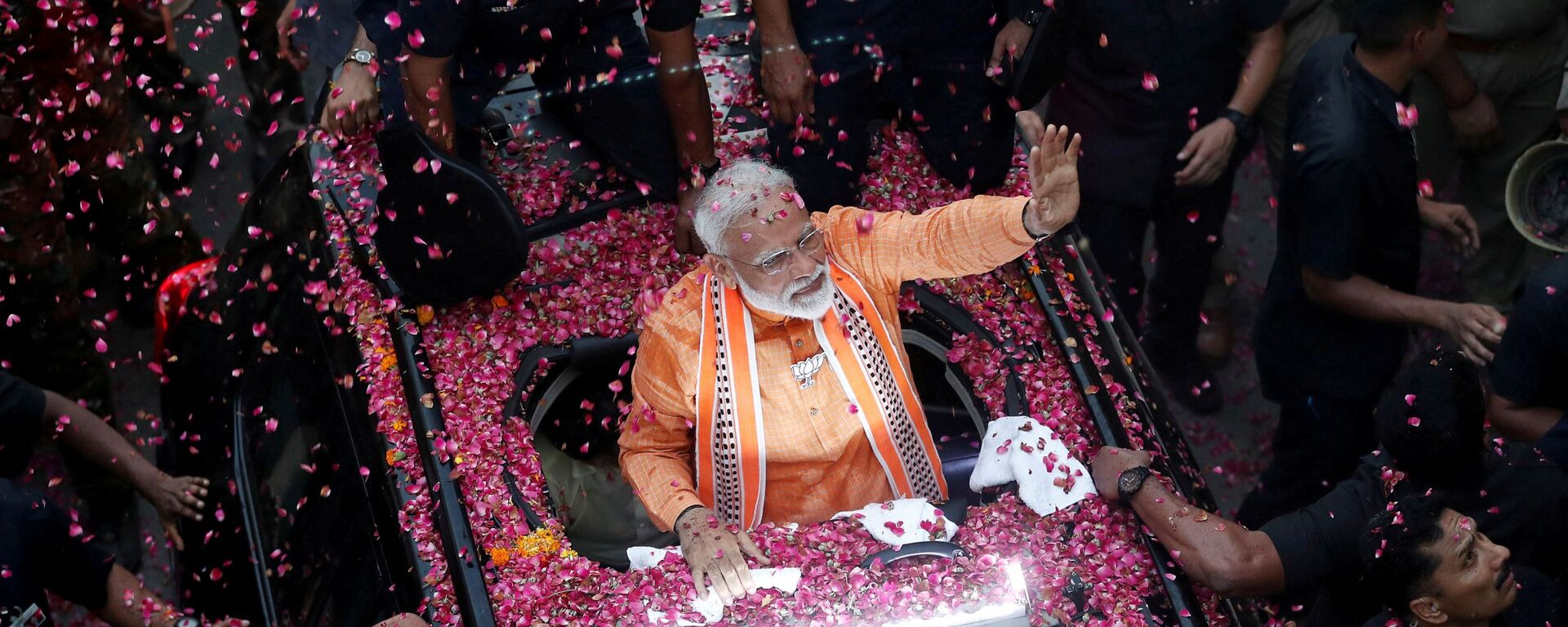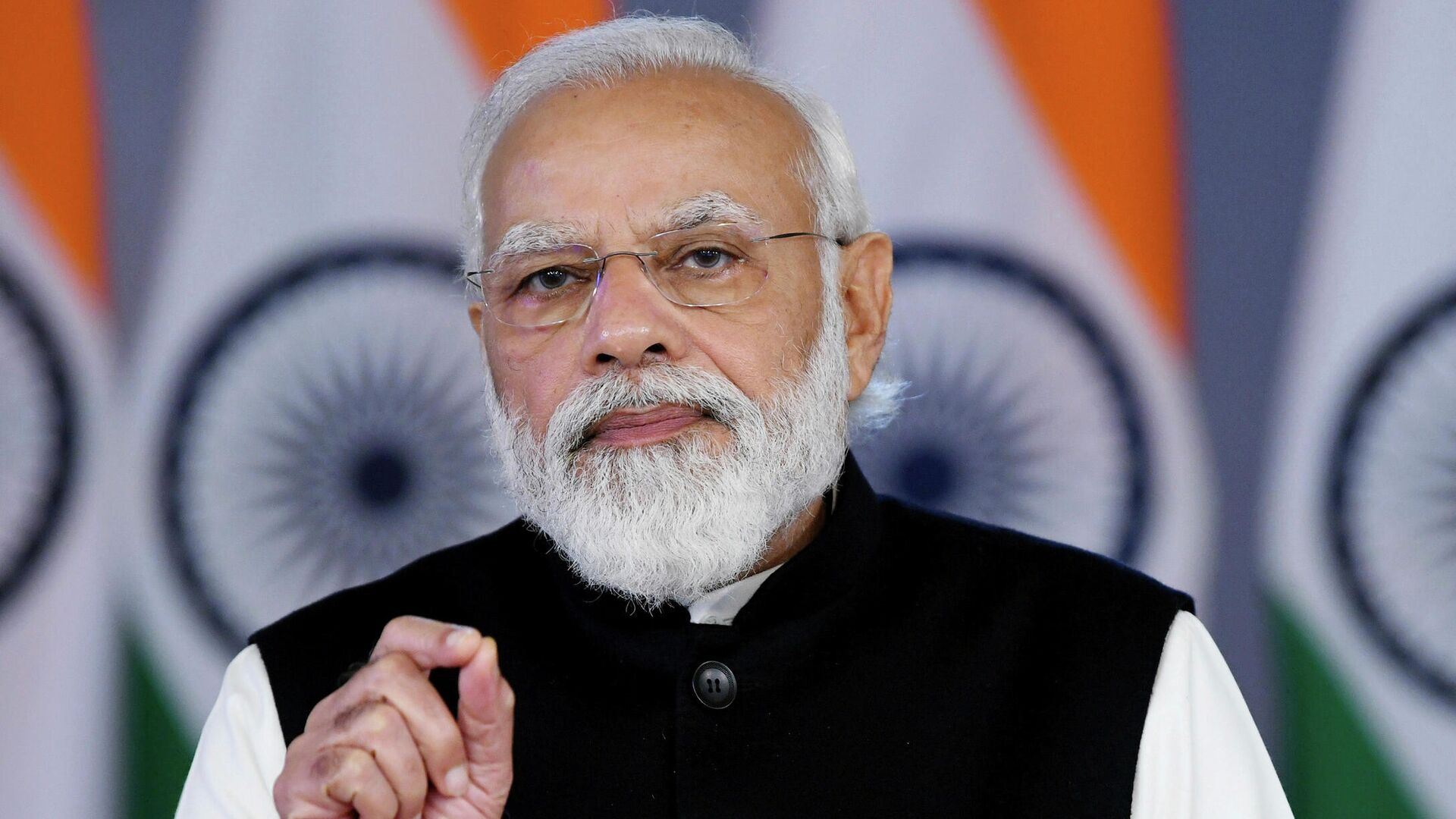https://sputnikglobe.com/20220608/indias-5-trillion-economy-target-slips-as-global-commodity-prices-halt-growth-momentum-1096121278.html
India's $5 Trillion Economy Target Slips as Global Commodity Prices Halt Growth Momentum
India's $5 Trillion Economy Target Slips as Global Commodity Prices Halt Growth Momentum
Sputnik International
In 2019, Prime Minister Narendra Modi had envisioned making India a $5 trillion economy by 2024. Despite the COVID-19 pandemic-induced disruption, the prime... 08.06.2022, Sputnik International
2022-06-08T12:37+0000
2022-06-08T12:37+0000
2023-03-05T11:21+0000
narendra modi
economic crisis
global crisis
ukraine
inflation
economy
sputnik
gdp
https://cdn1.img.sputnikglobe.com/img/07e6/01/12/1092335936_0:22:2174:1246_1920x0_80_0_0_e1b0a1a77638105d24401997f3017c31.jpg
India will have a $5 trillion GDP in five years, the Chief Economic Advisor to the country's Finance Ministry, V. Anantha Nageswaran, announced. He pointed at the difficulties in sustaining "a moderately high growth rate".Despite these, the minister predicted that gross domestic product will be doubling every seven years, which could boost the GDP to $20 trillion by 2040.Nageswaran listed inflation, government spending, and the falling value of the Rupee against the US dollar as significant challenges facing policymakers. He asserted there is no pre-programmed roadmap or menu of options that could help the country deal with these challenges.The assessment came when the country's central bank, the Reserve Bank of India (RBI), hiked the policy rate by 50 basis points for the second month in a row, as the inflation projection for the financial year 2022-23 jumped to 6.7% from 5.7% earlier on the back of rising crude oil prices.The RBI noted that international crude oil prices remain high, adding there are risks of further fuel price growth in the country.The economist predicted the policy rate well beyond the pre-pandemic level, close to 6%, by March 2023.As part of achieving a $5 trillion nominal GDP, the Narendra Modi government had planned an investment of around $2 trillion in national infrastructure by 2024-25, $300 billion in revenue from electronics manufacturing, and an increase in the share of manufacturing in annual growth to 20% from its current 17%.However, increasing the cost of capital may hurt all these objectives, resulting in difficulties in achieving the $5 trillion by 2024, a goal set by PM Modi in 2019.IHS Markit data suggests that India's nominal GDP took eight years to double to $2 trillion in 2014 and another seven to grow to $2.7 trillion in 2021.Between 2006 and 2014, India's average GDP growth was around 7 percent, while it grew at a moderate pace of below 5 percent since Modi took charge in 2014.
https://sputnikglobe.com/20191206/indian-prime-minister-modi-reiterates-dream-of-having-5-trillion-economy-1077498361.html
ukraine
Sputnik International
feedback@sputniknews.com
+74956456601
MIA „Rosiya Segodnya“
2022
Rishikesh Kumar
https://cdn1.img.sputnikglobe.com/img/07e4/08/04/1080055820_0:0:388:389_100x100_80_0_0_40018ee210946d65d49ffba4f4c008e1.jpg
Rishikesh Kumar
https://cdn1.img.sputnikglobe.com/img/07e4/08/04/1080055820_0:0:388:389_100x100_80_0_0_40018ee210946d65d49ffba4f4c008e1.jpg
News
en_EN
Sputnik International
feedback@sputniknews.com
+74956456601
MIA „Rosiya Segodnya“
Sputnik International
feedback@sputniknews.com
+74956456601
MIA „Rosiya Segodnya“
Rishikesh Kumar
https://cdn1.img.sputnikglobe.com/img/07e4/08/04/1080055820_0:0:388:389_100x100_80_0_0_40018ee210946d65d49ffba4f4c008e1.jpg
narendra modi, economic crisis, global crisis, ukraine, inflation, sputnik, gdp
narendra modi, economic crisis, global crisis, ukraine, inflation, sputnik, gdp
India's $5 Trillion Economy Target Slips as Global Commodity Prices Halt Growth Momentum
12:37 GMT 08.06.2022 (Updated: 11:21 GMT 05.03.2023) In 2019, Prime Minister Narendra Modi had envisioned making India a $5 trillion economy by 2024. Despite the COVID-19 pandemic-induced disruption, the prime minister was hopeful that the target would be achievable with vigorous steps.
India will have a $5 trillion GDP in five years, the Chief Economic Advisor to the country's Finance Ministry, V. Anantha Nageswaran, announced. He pointed at the difficulties in sustaining "a moderately high growth rate".
Despite these, the minister predicted that gross domestic product will be doubling every seven years, which could boost the GDP to $20 trillion by 2040.
Nageswaran listed inflation, government spending, and the falling value of the Rupee against the US dollar as significant challenges facing policymakers. He asserted there is no pre-programmed roadmap or menu of options that could help the country deal with these challenges.
The assessment came when the country's central bank, the Reserve Bank of India (RBI), hiked the policy rate by 50 basis points for the second month in a row, as the inflation projection for the financial year 2022-23 jumped to 6.7% from 5.7% earlier on the back of
rising crude oil prices."Countries across the world are facing inflation at decadal highs and persistent demand-supply imbalances. The war has led to the globalisation of inflation," Shaktikanta Das, the central bank's governor, said on Wednesday.
The RBI noted that international crude oil prices remain high, adding there are risks of further fuel price growth in the country.
"The central bank seemed far more concerned about inflation --- reflected in its upward revision in its inflation forecast by 100bps to 6.7%—and relatively more sanguine on domestic growth impulses," Abheek Barua, the Chief Economist at HDFC Bank, said.
The economist predicted the policy rate well beyond the pre-pandemic level, close to 6%, by March 2023.
"Supply shocks arising out the pandemic and the ongoing geopolitical developments have been a cause of concern globally; in case of India, a significant part of inflation is imported and will require a concerted effort to bring under control," Subhrakant Panda, the Senior Vice President of industry body FICCI, assessed.

6 December 2019, 10:29 GMT
As part of achieving a $5 trillion nominal GDP, the Narendra Modi government had planned an investment of around $2 trillion in national infrastructure by 2024-25, $300 billion in revenue from electronics manufacturing, and an increase in the share of manufacturing in annual growth to 20% from its current 17%.
However, increasing the cost of capital may hurt all these objectives, resulting in difficulties in achieving the $5 trillion by 2024, a goal set by PM Modi in 2019.
IHS Markit data suggests that India's nominal GDP took eight years to double to $2 trillion in 2014 and another seven to grow to $2.7 trillion in 2021.
Between 2006 and 2014, India's average GDP growth was around 7 percent, while it grew at a moderate pace of below 5 percent since Modi took charge in 2014.






